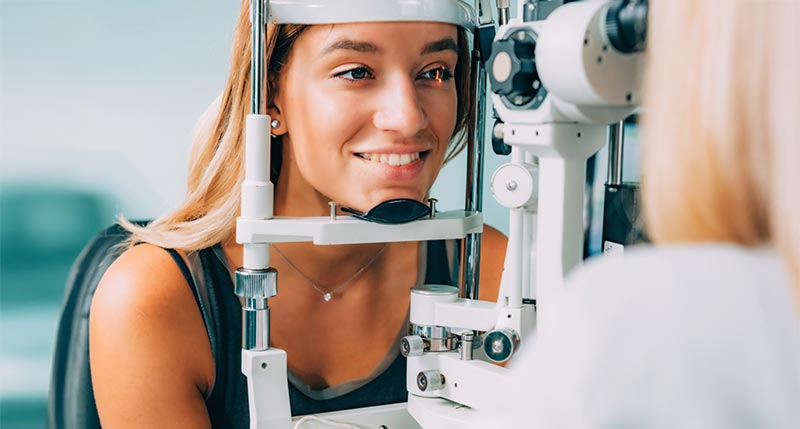Are you a safety- and health-conscious parent? You are if you teach your kids the importance of brushing their teeth, buckling their seatbelt, and wearing the proper protective equipment for sports including shin guards, helmets and knee pads. But are you overlooking how critical it is to protect kids’ developing eyes from the damaging ultraviolet (UV) rays of the sun? UV radiation is an invisible spectrum of light that is present in our atmosphere 365 days a year and reaches the earth’s surface even on cloudy or overcast days. UV damage is cumulative—it builds over time–and irreversible. You’re probably also aware that kids spend more time outside than adults do. Some studies estimate that up to 50% of lifetime UV exposure accumulates before age 18. Here’s why this is critical:
- Since the lenses in children’s eyes are still developing and their pupils are larger than adult pupils, more UV rays reach the back of children’s eyes, causing cumulative, irreversible damage to the retina.
- Kids are exposed to about 3 times more UV rays than adults are each year.
- Total lifetime exposure to UV light has a direct correlation with eye problems later in life, including the development of cataracts and macular degeneration.
- A hat worn alone won’t cut it: Wide brims block about 50% of UV ray exposure to the eyes, but that’s not enough. It’s a best practice to wear both a hat and a pair of high-quality, UV blocking shades.
It’s never too early for your kids to start wearing high-quality sunglasses that protect their eyes from damaging UV rays whenever they go outside. There are a large variety of sunglass options for all ages of children, ages 6 months to 18 years. (Children under 6 months of age shouldn’t be exposed to the sun). In addition to protecting their eye health for a lifetime of good vision, just think how cute they’ll look in their little sunnies! Here’s what to look for when buying sunglasses for children:
- Full UV spectrum protection that blocks 100% of both UVA and UVB rays. A new designation, “UV 400” also meets this standard, because it blocks all wavelengths of the sun’s rays up to 400 nanometers.
- High-quality frames and lenses from a credible source rather than a discount shop, online auction or street vendor. Costume sunglasses won’t protect your child’s eyes!
- Prioritize comfort and fit: Kids won’t wear them if they’re not comfortable, and they need to fit well so they won’t fly off if your child performs a less-than-perfect dismount from the swings or monkey bars.
- Wraparound styling is a bonus. The more skin that’s covered, the less UV exposure around the delicate eye area. More than 90 percent of all skin cancers are caused by UV exposure.
- Impact resistant frames are a great choice. Such frames will bend but won’t break, and will keep your child’s eyes protected through the falls, jumps, trips and spills of an active lifestyle.
- Scratch-resistant coated lenses are another smart option, to help protect the glasses from the inevitable drops, sand and dirt that will befall them.
The sooner you instill the importance of wearing high-quality sunglasses each time your child goes out in the sun, the lower your child’s risk of UV damage and the development of eye problems in their future. There’s a bonus to outfitting your kids with the proper UV protection in sunglasses: You’ll want to model the good behavior of wearing sunglasses whenever you go outside, 365 days a year and yes, that means on cloudy days, too. When Mom and Dad make it a habit, kids will see how important it is, and your whole family will benefit from the beneficial eye health habit of wearing your sunnies year-round!





